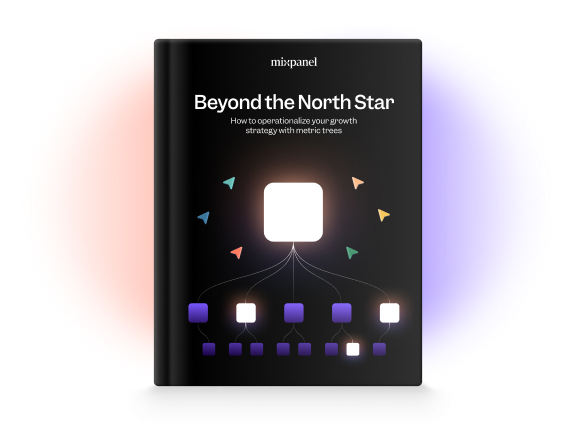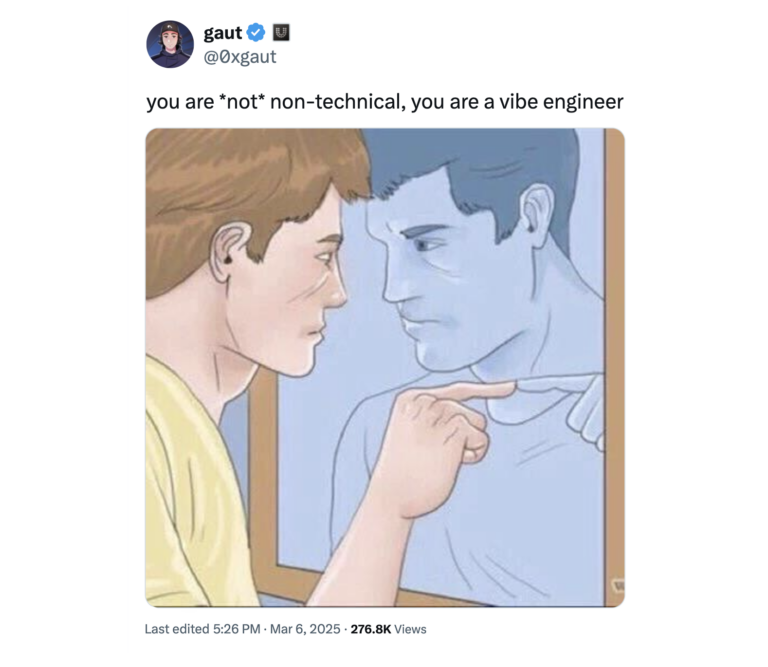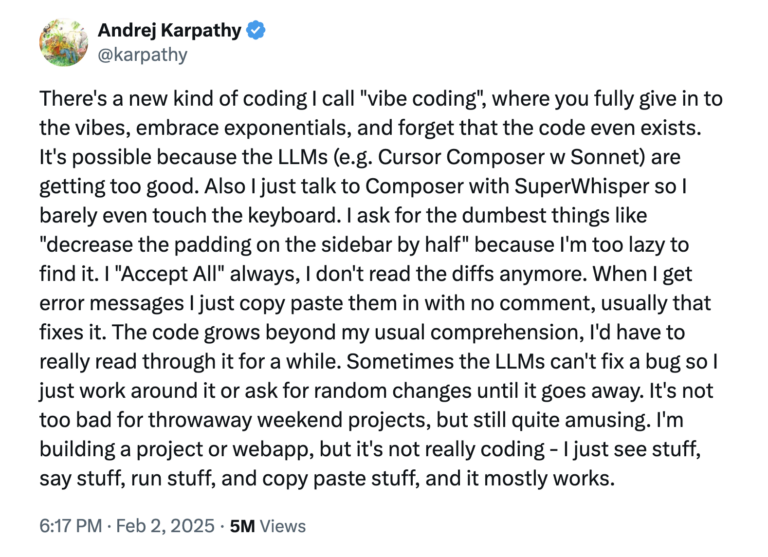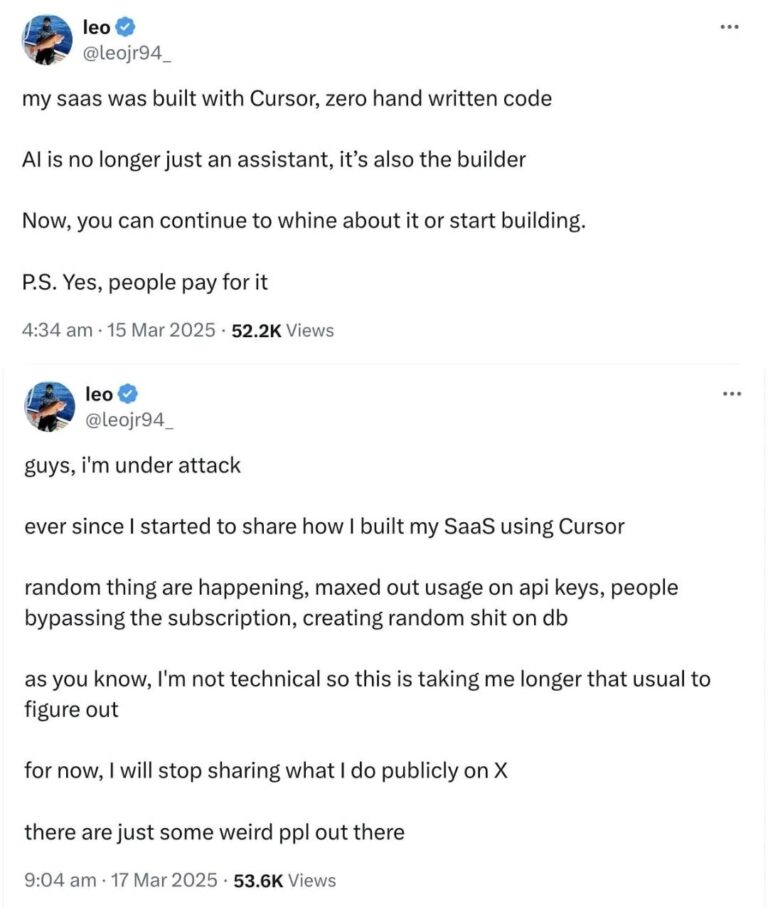
Vibe coding meets data: How AI-assisted builders use analytics to guide their projects

This summer, it’s all about the vibes. And by vibes, we mean "vibe coding" with AI.
More and more creatives and tech tinkerers in recent months have been discovering the possibilities of AI for building apps and simple digital products—with little to no programming experience required. Hence the trend's name, it's all about describing the vibes of your software idea to AI agents and letting them handle the coding.
AI can’t build everything, but it’s opening doors for plenty of people who would have been shut out just a few short years ago.
We reached out to a few of these vibe coders to find out more about their methods, what they’re building, and what they have to offer as best tips and tricks for others curious to get started.
One common refrain: Adding solid analytics to your vibe-powered development process can help you catch issues faster and keep your products on the right track.
Here’s more on the rise of vibe coding and how the builders using it are staying data-driven.
The origins of vibe coding
It all began back in February, with a seemingly innocuous Tweet from OpenAI co-founder Andrej Karpathy:
“There's a new kind of coding I call 'vibe coding’, where you fully give in to the vibes, embrace exponentials, and forget that the code even exists. It's possible because the LLMs … are getting too good. Also, I just talk to Composer with SuperWhisper so I barely even touch the keyboard,” the tweet reads.
That tweet quickly gathered over 5 million views and over 5,000 retweets. The idea of vibe coding—or coding by prompting AI with natural language, often without writing a single line of code yourself—took off, encouraging a new generation of founders and builders to get creative with(out) coding.
Karpathy may have coined the term “vibe coding,” but the idea itself was already gathering steam. As the MIT Technology Review put it:
“While the term may be new, the coding technology behind it isn’t. For the past few years, general-purpose chatbots like Anthropic’s Claude, OpenAI’s ChatGPT, and Google DeepMind’s Gemini have been getting better at writing code to build software, including games, websites, and apps. But it’s the recent advent of specially created AI coding assistants, including Cursor’s Chat (previously known as Composer) and GitHub Copilot, that really ushered in vibe coding. These assistants can make real-time predictions about what you’re trying to do and offer intuitive suggestions to make it easier than ever to create software, even if you’ve never written code before.”
Even in the short time since Karpathy’s dawning of a new age, vibe coding technology has gotten better, and the projects that can be built with it have gotten more complex. So how are the potentials (and limitations) of this new way of building playing out in the wild?
“Like looking over a developer’s shoulder”
For the vibe coders we spoke to, these new technologies have made it possible to harness their imagination, without the technical constraints that would have held them back even a few years ago. With AI taking care of the technical nitty-gritty, vibe coding lets them focus on the outcome they want rather than the lines of code that will allow them to get there.
“This approach isn't just about using AI to generate code; it's about creating a human-machine collaboration model that lets developers focus on creativity and product vision rather than getting stuck in coding or debugging tasks,” is how vibe coder and Twittershots founder Kevin Wu described it to us.
At its best, vibe coding can help builders save hours of work that it would normally take themself or a hired dev or agency to create a new app, software feature, or website.
“Vibe coding lets you chase these sparks of ideas. In the past, we would storyboard, create lo-fi mockups, then hi-fi designs, turn it into a working prototype, then get developer feedback, and likely iterate," said William Sayer, UX designer and vibe coder building Takeaways. “Now, adding this new idea or feature to the product is potentially just one or two prompts away.”
Raymmar Tirado described vibe coding as fulfilling his lifelong dream of “looking over a developer’s shoulder” and giving them instructions on what to do next. Most recently, he’s used Replit’s AI agent to build a global tracking widget for his Webflow cloneables (Webflow websites that can be cloned and customized). The widget allows him to add a universal call-to-action and manage the offer from a single dashboard while tracking traffic and campaign performance across the entire network.
The reality check: How far can vibes actually take you?
So far, the picture we’ve painted of vibe coding is pretty one-dimensionally rosy: Save tons of hours, hundreds or maybe even thousands of dollars, and make all of your wild ideas come true, without any dev support? Sign me up, please.
But (and of course there’s a but), vibe coding today still has significant development gaps, including some that can cause serious technical issues or setbacks if you don’t know what to look out for.
One well-documented concern is security. If an AI agent has a simple directive to build something, there’s no guarantee it won’t leak secrets like API keys or confidential information in the code itself, giving anyone access to your backend.
“When you’re vibe coding, it’s hard to tell if that’s happening unless you review the code,” warned Micah Allen, Mixpanel Senior Software Engineer. “I’ve had friends ask me to review things they’ve vibe coded recently. In one instance, I was able to use the information he published and log into his admin account.”
Different AI tools require different levels of technical expertise, and the platform you choose matters. For more experienced builders, tools like Cursor AI or VS Code are a good choice. For complete novices, a platform like Replit might make more sense. “There are a lot of things that come along with doing development work that most people don’t think about, like standing up the server and secure environmentals,” Raymmar said. “Picking the right AI tool makes a big difference.”
No matter what AI co-pilot you choose, both Raymmar and William agree that it’s important to have an idea of what the AI is doing and to check its suggestions. “Most of the time it makes great suggestions, but maybe 10% of the time it will suggest something that it shouldn’t do,” Will said. “Every time it cooks something up, I go through to make sure I understand what it’s doing to the code.”
And if he doesn’t understand, he can ask the AI itself to explain. “When I don’t know, I can copy and paste that line into a chat and ask the AI to break it down for me. Vibe coding is so much faster than coding manually, but slowing down a little bit to understand what’s happening is really important.”
Rome wasn’t vibe coded in a day
Another common vibe coding mistake is trying to build something complicated with a single prompt. “I start with the smallest piece I can get working and then build out from there,” Raymmar said. “Most people will have this assumption that they can tell the AI ‘build Airbnb,’ and it’s going to one-shot the whole application. And that’s almost never the case.”
Taking the time to chat with the AI before starting, giving it some context, working out your requirements, and refining your prompts can save you a lot of time and effort down the line. “The more precise you can be, the better the output is going to be,” Raymmar added.
Something else that doesn’t work: trying to “talk the AI into fixing a mistake.” If something isn’t working, don’t be afraid to roll it back and try again. “Saving your progress along the way is important,” Will explained, and so is patience with the process. “The technology is getting better and better. Don’t burn yourself out and get frustrated. Even if there’s something you might not be able to do now, wait and you might be able to do it in six months,” he said.
Where analytics enters the vibe coding workflow
AI coding can easily create false confidence (who doesn’t love the way ChatGPT showers us with compliments every time we ask a question?), but adding analytics to your vibe-coded project can serve as an important reality check.
Tools in Mixpanel like Session Replay and the plethora of quantitative reports enabled by event tracking give vibe coders the kind of granular insights into user behavior that can indicate whether the thing AI built for them is working or not.
For example, William started using Mixpanel on a large product he’s been vibe coding for a client, which has hundreds of thousands of downloads. Before Mixpanel, both he and the client had been under the assumption that they were building for two main user groups and had mainly ignored what they assumed was a much smaller third segment.
“The minute we connected Mixpanel, we realized that instead of this segment representing around 10% of our users, it was actually closer to 40%, which is an absolute cosmic shift in our understanding of our users,” William said. “That kicked us into gear and made us realize we couldn’t ignore this large group. We’ve started adding features and filling gaps specifically for those users. We were just guessing before, but now we have the data to help us know we’re making the right decisions.”
Kevin also shared several examples of how he uses Mixpanel while vibe coding TwitterShots: “I've integrated behavior tracking in my Twitter screenshot tool—from login, entering tweet links, theme selection, to using export or copy images. I check the user event flow daily to analyze completion rates and see exactly where users are abandoning the product.”
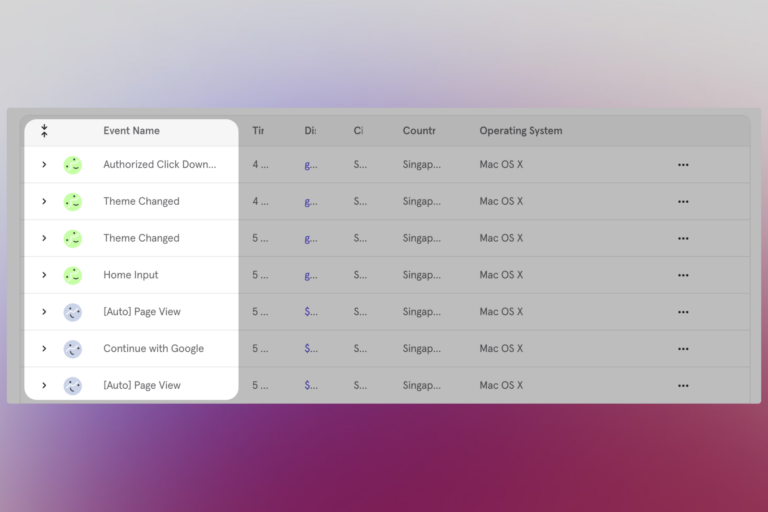
He’s also used the platform to analyze user demographics, leveraging the country/region options to identify that a large portion of his users came from the Middle East and North Africa. “Since they typically read right-to-left (RTL), I quickly shipped layout optimizations to accommodate this.”
Finally, he uses Mixpanel for A/B testing. “Recently, I saw someone mention that adding Google login boosted their signup rates significantly. I'm A/B testing both approaches with real data by adding Mixpanel tracking to both buttons to see which one users prefer clicking,” he said.
Mixpanel + vibe coding: A natural fit
A digital analytics platform like Mixpanel aligns very naturally with vibe coding.
Part of that is simply Mixpanel’s ease of use, with an intuitive user interface that makes self-serve analytics accessible to non-technical builders.
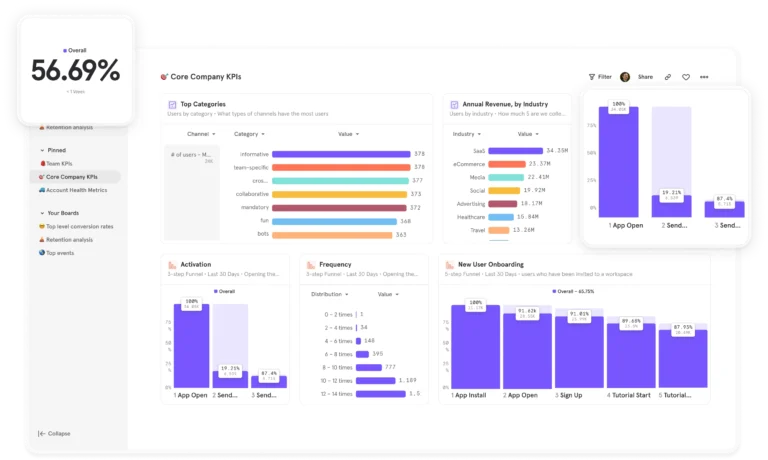
But another important factor is how accessible Mixpanel is for the AIs themselves. “Our documentation is super straightforward,” Mixpanel’s Micah Allen said. “AI models are trained on the internet, and that’s where they get their information. Mixpanel is very easy to implement. If you ask an AI to implement tracking, it could do the whole job for you. There are a lot of third-party tools where that wouldn’t be the case because they have a more complex setup or their documentation isn’t as straightforward.”
Vibe analyzing: Using AI for analytics too
AI is changing the game for software development, and it’s making analytics easier than ever, too. Mixpanel’s Spark AI makes it possible to chat with your data, ask follow-up questions to dive deeper into your analysis, and answer all of your product, marketing, and revenue questions with natural language. Ask Spark questions like “What’s our conversion rate?” or “What are our top sources of website traffic?” to automatically create reports and Boards that answer those questions.
“Vibe coders will definitely benefit from Spark AI because there’s less of a learning curve,” Micah added. “You don’t need to know how to use Mixpanel to start getting insights from your data.”
You're still the builder
AI tools, vibe coding, and vibe analytics are opening up a new world of possibilities for creative builders and entrepreneurs. They no longer need to work with a developer or hire an agency to see an idea through—a few short hours and a couple of prompts can help them test initial viability.
The true differentiators are imagination, creativity, and building products that users actually want. “Product features are becoming easier and easier to make,” William said. “What separates good vibe-coded apps from bad ones is actually listening to what users want. And that’s where a tool like Mixpanel comes in—it helps you understand your users.”
Ready to add data-driven insights to your vibe coding workflow? Try Mixpanel for free.

